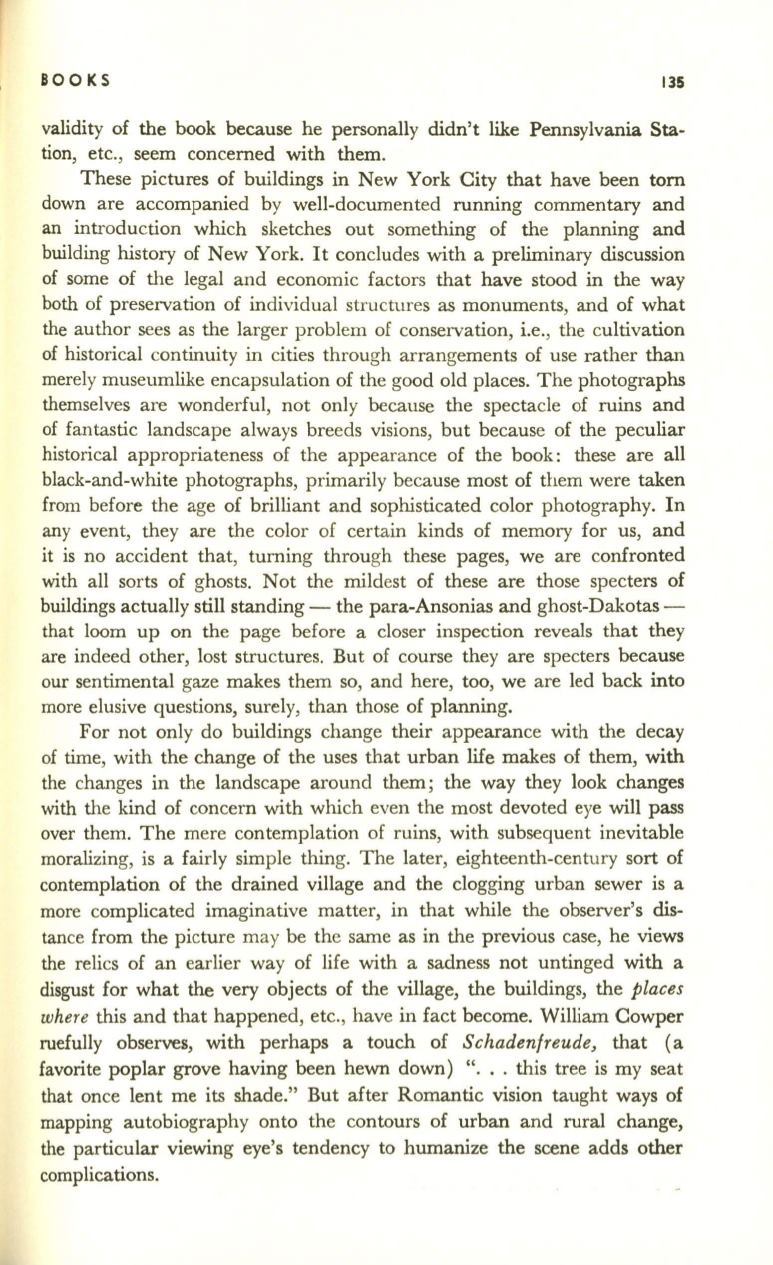
BOOKS
135
validity of the book because he personally didn't like Pennsylvania Sta–
tion, etc., seem concerned with them.
These pictures of buildings in New York City that have been torn
down are accompanied by well-documented running commentary and
an introduction which sketches out something of the planning and
building history of New York.
It
concludes with a preliminary discussion
of some of the legal and economic factors that have stood in the way
both of preservation of individual structures as monuments, and of what
the author sees as the larger problem of conservation, i.e., the cultivation
of historical continuity in cities through arrangements of use rather
than
merely museumlike encapsulation of the good old places. The photographs
themselves are wonderful, not only because the spectacle of ruins and
of fantastic landscape always breeds visions, but because of the peculiar
historical appropriateness of the appearance of the book: these are all
black-and-white photographs, primarily because most of them were taken
from before the age of brilliant and sophisticated color photography. In
any event, they are the color of certain kinds of memory for us, and
it is no accident that, turning through these pages, we are confronted
with all sorts of ghosts. Not the mildest of these are those specters of
buildings actually still standing - the para-Ansonias and ghost-Dakotas -
that loom up on the page before a closer inspection reveals that they
are indeed other, lost structures. But of course they are specters because
our sentimental gaze makes them so, and here, too, we are led back into
more elusive questions, surely, than those of planning.
For not only do buildings change their appearance with the decay
of time, with the change of the uses that urban life makes of them, with
the changes in the landscape around them; the way they look changes
with the kind of concern with which even the most devoted eye will pass
over them. The mere contemplation of ruins, with subsequent inevitable
moralizing, is a fairly simple thing. The later, eighteenth-century sort of
contemplation of the drained village and the clogging urban sewer is a
more complicated imaginative matter, in that while the observer's
dis–
tance from the picture may be the same as in the previous case, he views
the relics of an earlier way of life with a sadness not untinged with a
disgust for what
the
very objects of the village, the buildings, the
places
where
this and that happened, etc., have in fact become. William Cowper
ruefully observes, with perhaps a touch of
Schadenfreude,
that (a
favorite poplar grove having been hewn down) "... this tree is my seat
that once lent me its shade." But after Romantic vision taught ways of
mapping autobiography onto the contours of urban and rural change,
the particular viewing eye's tendency to humanize the scene adds other
complications.


